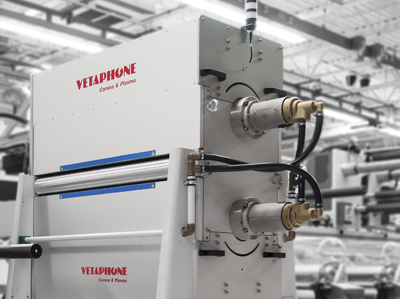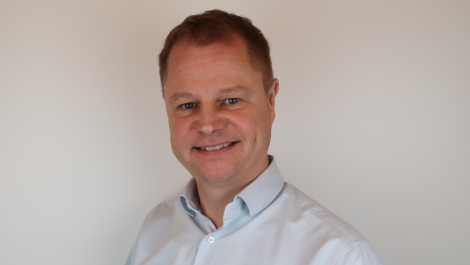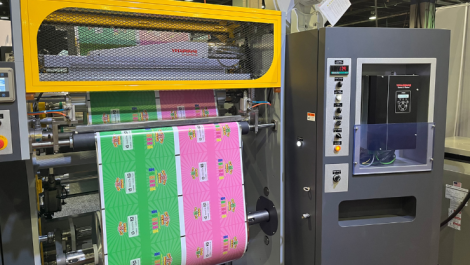Vetaphone is a leading supplier of Corona treatment and Plasma treatment technologies
Frank Eisby, CEO of Vetaphone, discusses the problems facing today’s narrow web converters and offers a simple guide to getting it right.
The invention and development of Corona treatment has largely mirrored the requirements of the market in terms of performance over the intervening years. But the problems facing narrow web converters now require a greater degree of understanding if the surface treatment applied is to be effective in today’s increasingly sophisticated market.
First, there is the need for simple Corona treatment, and this applies to virtually all narrow web press applications. It will typically require a Corona unit to deliver a power rating of 1.5 – 2.0 kW, and provide excellent performance on standard substrates run off at low to medium speeds.
The second section has been created by the development of new and more difficult substrates. These are run off on the latest generation of narrow web presses that have been optimised by manufacturers for high speed production. These factors place an increased demand on the Corona unit to deliver the correct dyne level, which typically needs to be rated at 3.0 – 5.0 kW. To understand this concept, think of the similar situation with UV curing, where dwell time under the lamp, defined by power rating and running speed, are critical to achieving a complete cure.
The third and final section relates to those substrates that have been developed to produce “unique” labels, typically using special inks and lacquers, lamination, multi web applications and other techniques to produce sophisticated products. The chemical constituents of these substrates require a chemical treatment process as well as a physical one – and in these instances Plasma treatment is necessary to ensure bonding. Plasma should not be considered as a replacement for Corona, more as a logical development of technology to keep pace with the requirements of more sophisticated materials and processes.
It is essential that converters appreciate the importance of what can appear to be a minor ancillary process. Converters need to wise-up on what all their technology can do for them – and not allow surface treatment to be the forgotten element.




